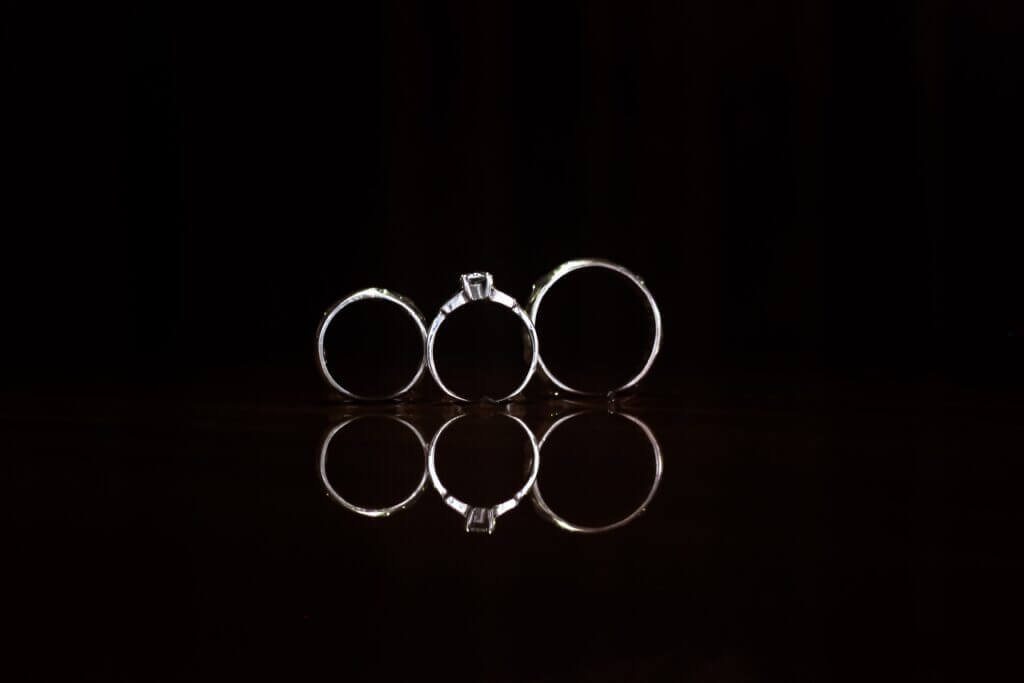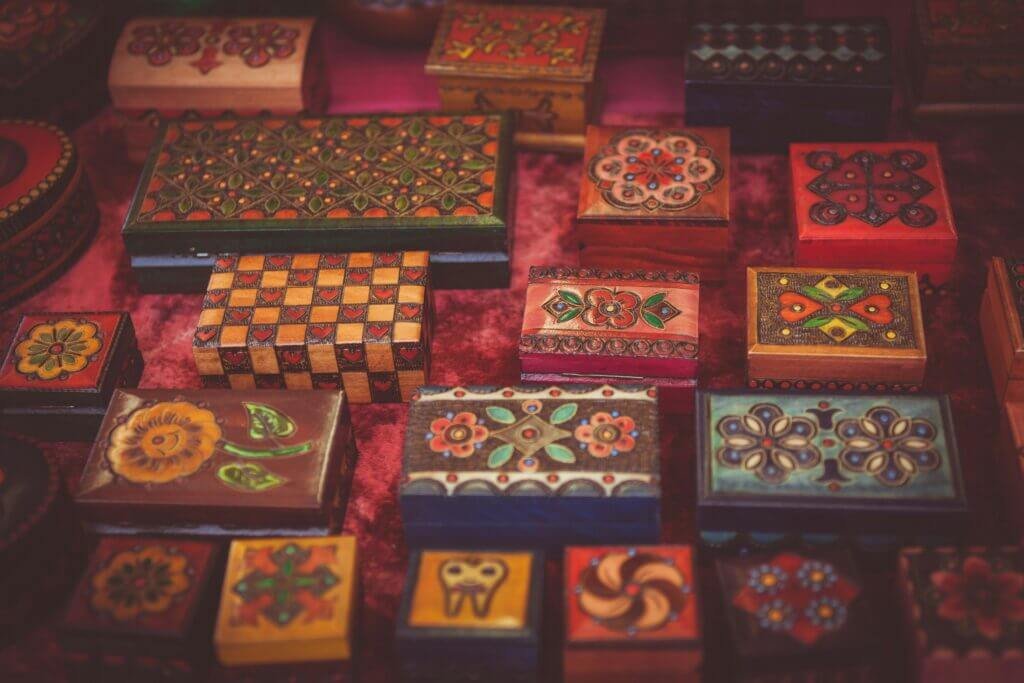Imagine sitting in a lush shop, filled wall to wall with glittering jewels that beckon you closer. These pieces are not merely accessories, but stories given tangible form by meticulous hands. You might ask yourself, “Is a jewellery maker an artist?” The notion of the jeweller as an artist complements the idea of jewellery itself as an art form, wonderfully blurring the lines between utility and aesthetics. This intriguing inquiry forms the heart of the article “Is A Jewellery Maker An Artist?”, offering an exploration of the creativity, skill, and passion that defines the world of jewellery creation.

Understanding Jewelry Making
Jewelry making involves the crafting of wearable trinkets utilizing various materials and techniques. It’s an ancient craft that has evolved over thousands of years, from the simple shell and bone ornaments of primitive humans to the intricate, gemstone-encrusted creations of today’s master jewelers. Jewelry making can encompass a wide range of styles, from traditional to contemporary, and it can use a multitude of materials, such as precious metals and gemstones, as well as lesser-known materials such as leather, glass, ceramics, and even recycled materials.
The process of crafting jewelry
The process of crafting jewelry generally starts with a concept or design idea. A jewelry maker takes their idea and transforms it into a physical object, usually through a combination of sketching, model-making, and trial and error. After that, they must source the materials they need and decide on the best construction methods for their design. The actual creation process can involve several stages, including casting, soldering, stone-setting, and polishing, all of which require a high degree of skill and precision.
The different types of jewelry creation
The world of jewelry creation is incredibly diverse, with many different types and styles to explore. Some jewelers specialize in traditional forms of jewelry, like wedding rings or engagement rings, while others are more experimental, creating sculptural pieces that push the boundaries of what jewelry can be. There’s also a wide range of techniques that jewelers can use, from classic metalwork to innovative 3D printing.
Required skills for jewelry creation
Jewelry creation requires a variety of skills, both technical and artistic. On the technical side, jewelry makers need to be familiar with a range of tools and techniques, from basic hand skills like sawing and filing to more advanced processes like enameling and stone setting. On the artistic side, they need a good eye for design and an understanding of shape, form, and balance. Attention to detail is crucial, as even the smallest flaw can diminish the look and value of a piece of jewelry.
Exploring the Concept of Art
Art is a broad, fascinating concept that encompasses many different forms and mediums. It’s a way for individuals to express their emotions, ideas, and viewpoints, and it plays a key role in our societies, cultures, and personal lives.
Definition and significance of art
Art can be difficult to define because it’s so subjective and personal, but generally speaking, it’s any creation or activity that uses imagination, skill, and creativity to express something. Art’s significance lies in its ability to communicate complex ideas, provoke thought, and elicit emotions.
Various forms of art
Art comes in many forms, from the traditional mediums of painting, sculpture, and photography, to the performing arts, such as music, theatre, and dance, to the literary arts, such as poetry and prose. Each form has its own unique characteristics and offers its own expressive possibilities.
Artists and their creative processes
Artists are the individuals who create art, using their unique perspectives and interpretations to craft pieces that reflect their thoughts, feelings, and experiences. The creative process varies widely among artists, with some following a rigid, structured approach, while others work more intuitively and spontaneously.

Art vs. Craft: The Ongoing Debate
The art vs. craft debate is a longstanding one that seeks to define and categorize these two areas of human creativity. While they share many similarities, there are also distinct differences to consider.
Distinctions between art and craft
The distinctions between art and craft often hinge on purpose and context. Art is typically viewed as a form of self-expression, a way for the artist to communicate their individual ideas and perceptions. Craft, on the other hand, is often associated with the creation of functional items, using established techniques and methods.
The perspective of society on art and craft
Society tends to place art and craft in separate categories, with art often seen as superior or more valuable. This perception is based, in part, on the traditional view that art is a higher form of expression, while craft is a lesser skill. However, this perspective is changing, with more recognition of the value and merit of craft.
Convergences between art and craft
Despite their differences, art and craft share many similarities. Both involve creativity, technical skill, and a meaningful process of creation. Moreover, many creators blur the lines between the two, producing functional pieces with strong artistic qualities or creating art using traditional craft methods.
Artists vs. Artisans
Artists and artisans are both creators, but they differ in their focuses and the value placed on their work.
Comparing artists and artisans
Artists are often seen as creators who use their creativity and skill to express a personal vision or concept. They might work in a variety of mediums and their work often has no functional purpose other than to be admired and enjoyed. Artisans, by contrast, often create functional pieces, applying a high level of skill and craftsmanship to their work.
Analyzing the role of creativity for both
Both artists and artisans need creativity in their work. For artists, creativity often resides in the conception and design of the work. For artisans, creativity is often found in the execution, the skillful manipulation of materials to achieve a beautiful and functional result.
The impact of skill and talent
Skill and talent play a role in both art and crafts. Artists need the technical skills to execute their vision and the artistic talent to create something beautiful and meaningful. Artisans, on the other hand, rely on their skilled craftsmanship to create well-made, functional items.

Jewelry Making as an Art Form
Jewelry making is often categorized as a craft because it involves the creation of functional objects, but it is increasingly recognized as a form of art, thanks to the creativity, skill, and artistic vision that it involves.
How jewelry making qualifies as art
Jewelry making qualifies as art because it involves the same basic elements: creative expression, aesthetic principles, and skilled execution. Jewelry makers use their creative vision to design pieces, employ aesthetic principles to make them visually appealing, and apply specialized skills to bring their designs to life.
The use of artistic elements in jewelry design
Jewelry pieces often incorporate a range of artistic elements, such as line, shape, color, and texture. Jewelry makers use these elements to create visually appealing pieces, just as a painter or sculptor would.
The role of creativity, skill, and innovation in jewelry making
Creativity, skill, and innovation are crucial in jewelry making. Creativity is involved in the conception and design of the pieces. Skill is needed to manipulate the materials and implement the design, and innovation comes into play when jewelers come up with new designs or techniques, pushing the boundaries of what’s possible in the medium.
Unveiling the Artistic Process in Jewelry Making
Jewelry making, like any other art form, involves a creative process that goes from the initial concept to the final product.
Conceptualization of design
The artistic process in jewelry making starts with the conceptualization of the design. Jewelers create sketches or models, refining their ideas until they have a clear vision of what they want to create.
Selection and manipulation of materials
The next phase involves the selection and manipulation of materials. Jewelers have to choose materials that will best serve their design, keeping in mind factors like color, texture, durability, and cost. They then work these materials, using various tools and techniques, to shape them into their desired form.
The creation and finalization process
The final stages of the artistic process involve the assembly of the jewelry piece and the final touches. This involves skillful craftsmanship and attention to detail, as well as a keen aesthetic eye to ensure that the final product is as beautiful and visually appealing as the initial concept.

Comparing Jewelry Makers with Other Artists
Jewelry makers are artists in their own right, using their creativity and skill to create wearable art.
Similarities in the creative process
Just like painters, sculptors, or any other artists, jewelry makers go through a creative process that involves conceptualization, material selection, and skilled execution.
Recognition of jewelry makers in the art world
Although jewelry making is often categorized as a craft, more and more, these creators are getting recognition in the art world. Notable jewelry makers are being celebrated for their innovative designs and exquisite craftsmanship, validating their position as artists.
Showcasing works: Jewelry vs traditional art exhibitions
While both jewelry and more traditional forms of art are exhibited for viewing and purchase, the context can be quite different. Art is typically displayed in museums or galleries, while jewelry may often be found in boutique shops or special jewelry exhibitions.
Case Studies of Renowned Jewelry Makers
There are many successful jewelry makers who have made significant impact in the art world with their stunning creations.
Profiles of successful jewelry makers
These trailblazing artisans have used their skill and creativity to push the boundaries of jewelry design, creating beautifully crafted pieces that make a statement.
Analyzing their creative processes
The creative processes of these jewelry makers can provide insights into the artistry involved in crafting jewelry. From the initial conception of the design to the meticulous crafting process, their techniques reveal a relentless pursuit of excellence.
Notable pieces and their impact on the art world
Some of these jewelers have created iconic pieces that have become historical landmarks in the art world. These pieces, with their unique blend of aesthetics, craftsmanship, and innovation, have helped to redefine what’s possible in the realm of jewelry art.

The Impact of Jewelry as an Art Form on the Fashion Industry
As an art form, jewelry plays a key role in the fashion industry, influencing trends and adding a unique touch to various styles.
Influence on fashion trends
Many fashion trends have been inspired or influenced by the artistry in jewelry making. The creative designs and innovations of jewelry artists can redefine what’s fashionable, dictating what’s trendy, chic, or avant-garde.
Integration of jewelry with fashion
Jewelry is more than just a complement to fashion—it’s an integral part of it. Jewelry can transform an outfit, providing the final touch that pulls the entire look together.
The evolving role of jewelry in fashion
The role of jewelry in fashion continues to evolve. From a mere adornment, it has become a medium for personal expression and a tool for making a fashion statement.
The Future of Jewelry Making as an Art
Like every other art form, jewelry making is continuously evolving, influenced by technological advancements and societal shifts.
Emerging trends in the industry
New trends are constantly emerging in the world of jewelry design, spurred by a combination of artistic innovation, cultural shifts, and technological advancements.
The role of technology in jewelry making
Advances in technology are reshaping the jewelry making process, offering new possibilities for design and creation. Digital design and 3D printing, for instance, are revolutionizing the way jewelry is crafted.
Understanding the growth and development prospects of jewelry as an art form
As the line between art and craft continues to blur, and as the creative possibilities of jewelry making continue to expand, the future of jewelry making as an art form looks promising. With a continued focus on innovation, craftsmanship, and creative expression, the potential for growth and development in this field is vast.



